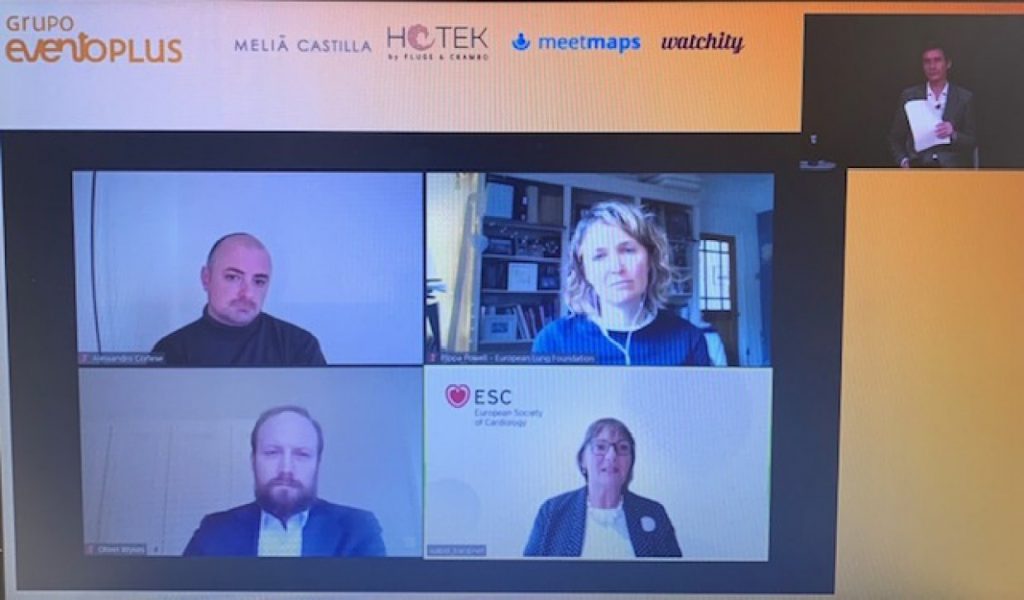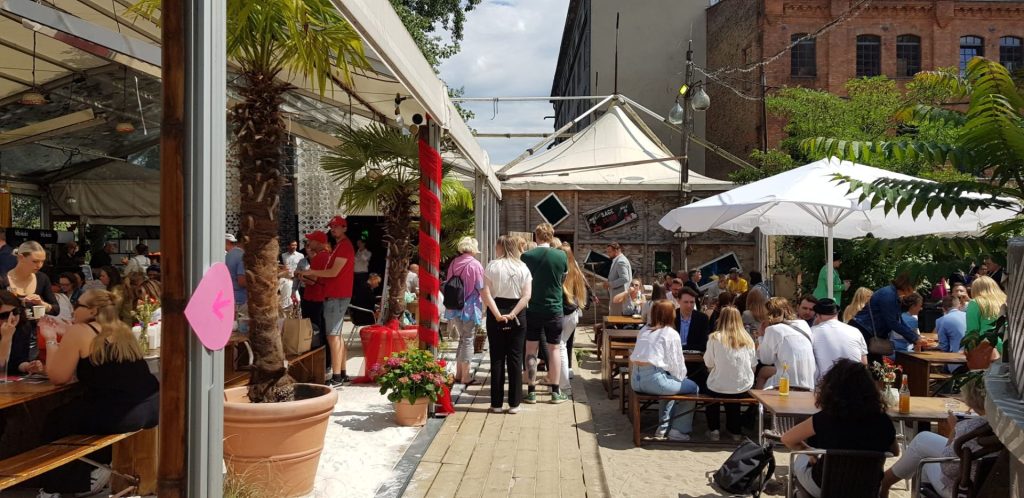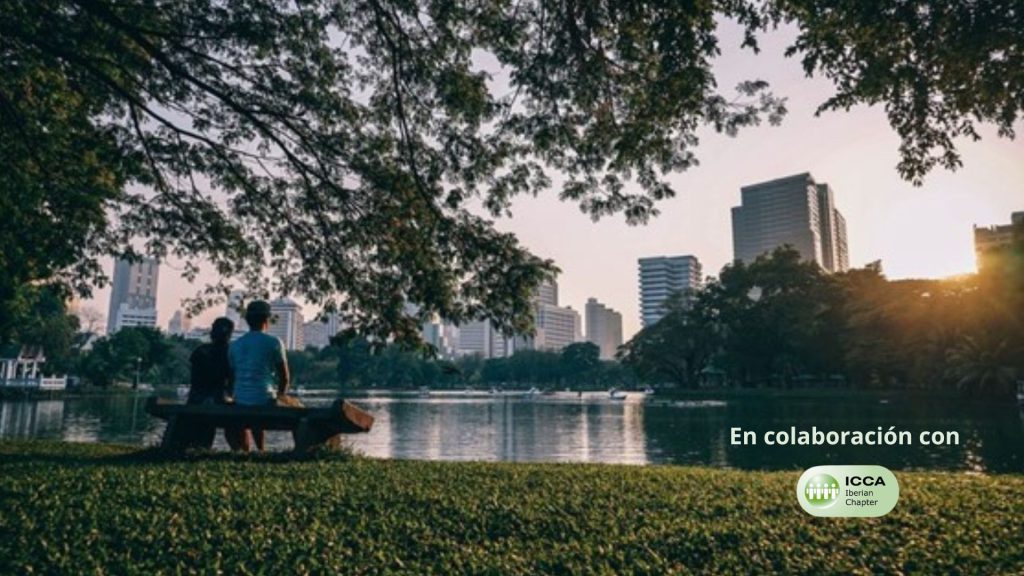Local impact: a game-changer in our industry?

Share news
Listen
To analyse this change, we organised a webinar with Alessandro Cortese, CEO of the European Society of Radiotherapy and Oncology (ESTRO), Isabel Bardinet, director of the European Society of Cardiology, Oliver Wykes, COO of association Wind Europe and Pippa Powell, director of the European Lung Foundation, four associations betting decisively on legacy or as they prefer to call it, (local and lasting) impact. What does this notion concretely mean? For Alessandro, it is about what we can do in health outcome for the patients. “We analyse it by measuring how patients are treated, and comparing this with how they should be treated if protocols and science were applied perfectly. We try to understand the barriers that create the gap between the optimal case and the actual case, and then work to solve these barriers. An event is a great catalyser, you have all the stakehodlers there, you have a long process (3-5 years) and can look at things long term, work with the expert local community, plan for actions over time and measure the results. An example in our Madrid event is to measure if the level of staffing is adapted to the level of equipment, and if it is not, to define how to develop vocations. You can have barriers in supply (researchers, staffing, machines) or demand (are patients aware, are other doctors aware of what has to be done); we give this information to the local society and the destination, and ask them to define and implement actions to help us improve the situation”.
For Isabel Bardinet, it is a bit different: “our goal is that the public does not become patients, so we look to get people to realise they can have a role in not becoming patients. We want the cities to be part of that, so we created a heart-health charter, get the cities to sign it and to encourage citizens to move to avoid heart diseases. In London we even created a heart trail in the city where people can walk or run, seeing messages along the way about how to avoid being a cardiovascular patient”. Does this involve much measurement in the following years after the congress? “Not enough yet, we would like to improve, but it is hard, effective measurement should probably be at the level of a generation”.
Pippa Powell has a similar situation, where prevention is key. “We started in 2000 bringing outreach as a complement to the congress. Where we take our congress, we communicate to local patients the importance of lung health, offering free testing to citizens. In 2014 we redefined this: it is about prevention, about explaining the importance of clean air, of avoiding smoking, exercising, also now vaccination. This is still based on having your lungs tested, which is a catalyst to explain ways to keep lungs healthy. It has to be done over a long period of time and with local stakeholders: patients associations, the city, the convention bureau. We need to understand what the city is already doing and how we can plug-in and amplify these actions, and we need to involve people who will keep the action on after the congress. It is hard to measure: we ask people what they intend to do (quit smoking, exercise) after the test we have given them, but the follow-up is difficult”. Finally, “actions defined vary from city to city: In Milan or Paris, smoking was key, in London and Madrid, it is air quality”.
Oliver Wykes works with destinations to have the right policy and regulatory framework for the wind energy industry. “We were introduced to this concept by Copenhagen, and we will apply it in our upcoming congress there in November. We understand legacy as the means of creating closer connexion between the congress and local community, and ensuring long term impact of our congress in the host city. One important thing is that it means considering a broader range of stakeholders. We focus our legacy efforts on three dimensions: people and society, research and education, and business. For P&S for instance, we work with the Danish Energy Agency to set up an intergovernmental forum to bring level policy experts from around the world to exchange best practices on deploying wind energy. We also work with education authorities to bring students to get jobs, internships, to inspire them to work in wind energy, and on the business side, we work with energy clusters to stimulate innovation”.
What is the difference between CSR and legacy?
Pippa defines CSR as mostly inside-out, “reaching out from the congress to the citizens”, while legacy must have a lasting effect, be a catalyst of a change that will stay after the event. She see going to a destination and offering tests as CSR, but engaging with local players and defining a project that everyone is engaged in as legacy/impact.
Does it go further than acting on patients and doctors? Towards investment, research centers, startup financing…?
According to Isabel, a congress helps in stimulating these factors, opening doors, but the medical society does not manage the research of new companies or investments. “We have an area where we help startups with grants from organizations to come to the event. It is something we provoke but don’t manage it”. In the case of Wind Energy, the induced economic impact is important, and there are indeed big investments being made locally after the event. It is not easy, though: the political climate can change fast, when investments in wind energy are long term. However, as Oliver reminds us, having investments is one of the results but the key objective is to ensure we can put forward the relevant messages locally and at European level.
Congresses, a great platform to build on
A large meeting is an amazing catalyst, and all participants stressed that even though these actions could be considered without the congress, having the congress take place amplifies and facilitates the actions enormously. In the words of Oliver, “an event is a great platform, you can have all the relevant players (industry representatives, policy makers, stakeholders) in one room and put forward the relevant messages. Also when you take stakeholders to a 10,000sqm exhibition, it gives them a better grasp of what the industry is about. If you join that with a relevant story, a noteworthy message, the event is really the best platform to create awareness”.
Is it strategic for associations? Would they sacrifice other metrics to ensure legacy?
ESTRO is especially resolute in this. It made some buzz in their latest RFP, as they weighed impact for 60% of the criteria to select the city. “The RFP is the moment when we can impact how people think about attracting an event, and we get replies which would involve the local communities. It is really strategic for us, or even more: it is about mission and vision”. For ESC, it cannot weigh too much, since the main ESC Congress is limited to very few destinations in Europe due to its size. But for smaller events, the desire of the destination to be a partner is an important criterion.
How transformative is this for our industry?
This is where it gets even more interesting: according to Alessandro, “if the industry thinks the pandemic is the worst thing that happened to it, it is up for a big surprise. The industry is based on people interaction and people travelling freely between countries. There is a climate crisis with much discussion on the impact of the sustainability of travelling. The storytelling we used to have about the justification of this industry (mostly creating jobs and economic activity) is not going to be sufficient anymore. So what we are discussing today is very important, because if we don’t all articulate the value and vision of the industry, then we fail to create the argument to justify why we meet. Also, what is going on now with the digitalization of events is at the core of what we do in a negative sense. We allow these communities to work together and interact and digitalization can harm our organizations. Legacy can be the shared vision with all stakeholders that we need now.
Isabel agrees and goes further: “I have been in meetings for long and I think something is changing fundamentally. If the meetings industry doesn’t wake up to this, I fear a number of meetings players won’t be here in a couple of years. Destinations have to think why we should come and how they can partner with us; it is not about selling hotel rooms and coffee cups. The industry used to be about booth builders, now online platforms have to be considered part of our industry. New actors will shake things up, but we shouldn’t lose sight of why we are doing this. To function, associations like ours just think “how can we fulfil our mission” and whatever is available for that, we will use. If it means using gaming platforms, we will”. But she adds that “something will always stay here: people want to meet. And this is fundamental. Destinations have a great new opportunity, either they take it or lose it”.
Pippa also asks for a partnership. “In the cities where we went and which have bought into our mission and vision, it has been a completely different experience and the impact has been much bigger”. Here comes the opportunity.
Should destinations help in more ways?
Pippa adds that “schools are a key target for us. When we come it is often the same topic, cities should help us make it that when we come we build on what has been said in the past rather than starting again”.
For Oliver, “we need a more integrated approach and the convention bureau can play a facilitator role, not only facilitating meaningful connections but also identifying them. They know the resources that can be locally leveraged. Their role needs to change… but some destinations already get it.
Isabel adds: “we don’t always get access to the local resources we need, and this is where we see a huge difference between cities who get it and convention bureaus who are just at the front of the hotel, industry and are not interested in anything else. When you see the mayor who is interested in supporting your cause and gives us access to the channels of communication to a massive number of people, this is really powerful. In some cities, the convention bureau is still trying to sell us the space for the gala dinner… when we don’t have gala dinners anymore! Each city must have a strategy and we can see how we can play a role and tap into that system to get and give value. And in this system, the convention bureau is our primary interface and cannot be a touristic agency to tap into the socioeconomic strategy”.
We analysed in a second part of the debate how the ESTRO objective was managed at a local level by the local society SEOR in collaboration with the Madrid Convention Bureau.
The event was hosted in the Meliá Castilla hotel, with the audiovisual technology of Hotek, registration system by Meetmaps and connectivity by Watchity… Our warmest thanks to all.










